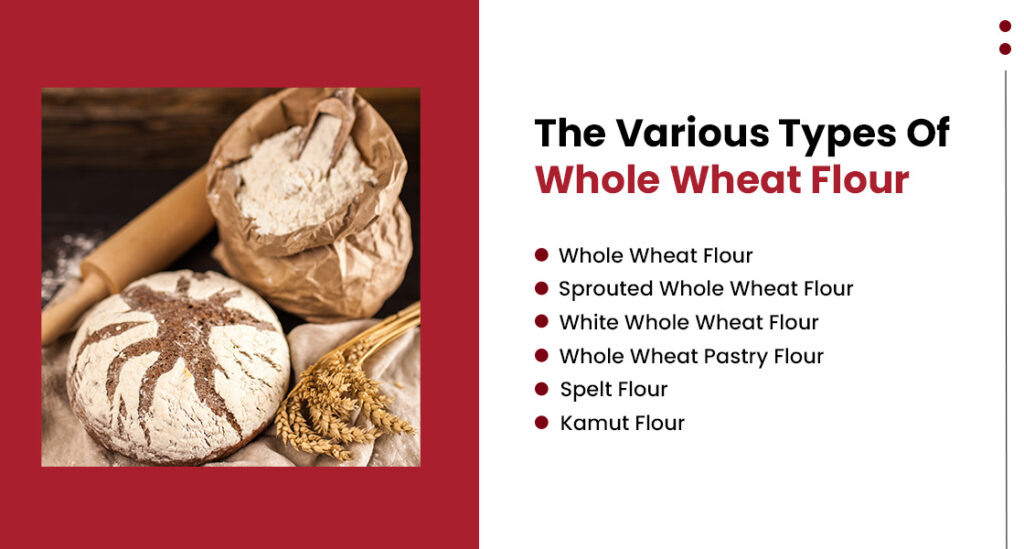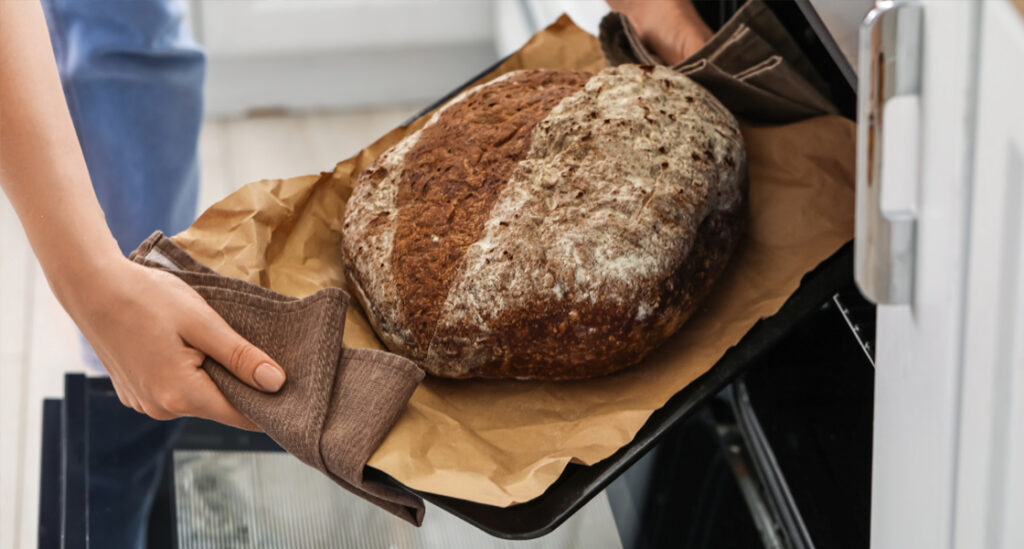When it comes to baking, flour is the foundation of countless recipes. But not all flours are created equal. In terms of offering a wealth of flavour, nutrients, and fibre, few come close to wholegrain flour. However, while baking with this tasty, nutrient-dense option is exciting, the number of wholegrain flour choices can also be a little overwhelming. Let us break down the various offerings on the baking aisles and how you can successfully incorporate wholegrain flour in your favourite recipes.
Unlike all-purpose flour, which is refined flour made by processing whole grains to remove the germ and bran before milling, wholegrain flour is ground from whole, unprocessed wheat kernels, grains, and seeds. As a result, it offers a more robust flavour profile while retaining the nutrients present in the germ and bran, such as antioxidants, B vitamins, dietary fibre, and healthy fats.

While various variations of wholegrain flour are readily available today, whole wheat remains the most common and least expensive option. Therefore, it is unsurprising that it is commonly found in numerous wholegrain baked goods. However, the taste and texture may differ depending on the type of flour used.
Whole wheat flour is generally milled from red wheat berries, otherwise known as hard red wheat, which gives the flour a stronger, richer, and almost nutty taste, adding depth and character to any baked goods. In particular, the hearty flavour works well in bread, muffins, or cookies, delivering a wholesome and satisfying eating experience.
Sprouted whole wheat flour is milled from red wheat kernels that have been soaked and allowed to germinate until they just begin to sprout. That helps to break down some of the starch and phytate, causing the flour (and the food you bake with it) to be milder in flavour and easier to digest.
Don’t be fooled by the name – white whole wheat flour is still whole grain! It is milled from a variety of hard white wheat with kernels that have a lighter colour and milder flavour than red wheat, making it ideal for those who seek the benefits of whole grain without the conventional strong taste of whole wheat.
Whole wheat pastry flour is made with kernels of soft white wheat, another variety of whole wheat. Unlike hard wheat kernels, soft wheat kernels are lower in protein. As a result, milling them produces a paler, lighter-tasting flour. In fact, baked goods made with this flour look and taste similar to those baked with all-purpose flour, striking a balance between a tender texture and whole wheat nutrition
Spelt is an ancient strain of wheat that provides you with flour that offers the best of all worlds – the nutrition of whole grain and a slightly sweet and nutty flavour complemented by a fine texture similar to all-purpose flour. That makes spelt flour suitable for various baked goods.
Kamut flour, made from another ancient strain of wheat (Khorasan wheat), is lighter than classic whole wheat flour and produces a buttery flavour, making it excellent for bread and pasta.

After learning about the health benefits of whole grain, many often ask this question: how do I substitute all-purpose flour with wholegrain flour in my recipes? While there is no simple answer to this question, here are several helpful tips to ease the transition and ensure you achieve your desired results.
Don’t be afraid to experiment with wholegrain flour! Whether you are baking quick bread, cookies, or muffins, feel free to swap all-purpose flour with the same measure of wholegrain flour for your recipe. The flavour will be heartier, and the nutrients abundant.
What is the texture and taste profile you seek to achieve with the final product? The answer can affect the type of flour to use. If you want lighter, paler baked goods with a tender texture, choose white whole wheat flour. Meanwhile, whole wheat pastry flour is ideal for making delicate crust doughs and cake batters.
Wholegrain flour absorbs more moisture than refined flour. Therefore, remember to add two teaspoons of liquid per cup of flour when converting any recipe to 100% whole wheat or whole grain to avoid the final product turning out dry and crumbly.
While we understand your eagerness to start baking after forming your wholegrain dough, we recommend letting it rest for 20 minutes beforehand. Doing so allows the flour time to absorb the liquid, resulting in baked goods that are tender and moist.
Baking with wholegrain flour is not just for health enthusiasts. It can be a conscious, flavourful choice that elevates your baking to the next level. Do not hesitate to experiment with different types of flour and savour the benefits. Whether you are making a rustic loaf or a batch of cookies, the switch is sure to add depth and nourishment to every bite. Happy baking!
If you are ready to make the switch, look no further than Prima Flour for quality wholegrain flour. Our products are conveniently available at all major supermarkets and hypermarkets in Singapore. Get in touch with us for further enquiries.
Learn More: 4 Reasons to Choose Prima Flour’s Wholegrain Flour
Reference Links:
https://www.forksoverknives.com/how-tos/types-whole-grain-flour-guide-whole-wheat-flours/
https://www.unlockfood.ca/en/Articles/Cooking-And-Food/Grain-Products/All-about-grain-flours.aspx